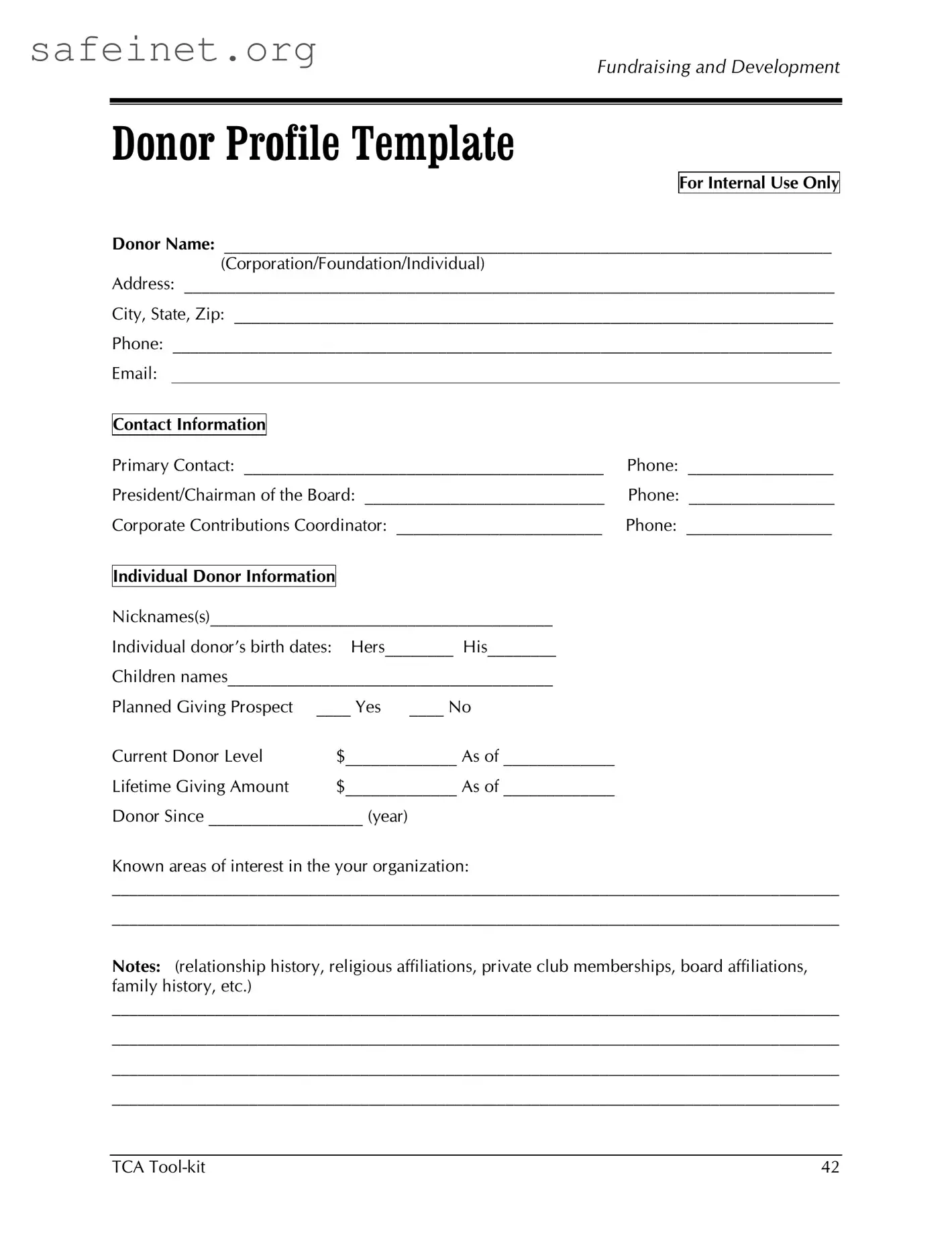What is the purpose of the Donor Profile form?
The Donor Profile form serves as a comprehensive tool to capture essential information about donors. It is designed for internal use only, providing insights into the backgrounds, preferences, and past contributions of potential or current donors. This document helps organizations tailor their fundraising strategies and maintain meaningful relationships with donors by keeping track of their unique interests, connections, and giving history.
Who should fill out the Donor Profile form?
The Donor Profile form should be filled out by individuals or teams involved in fundraising and development activities within an organization. This includes development officers, fundraising coordinators, or anyone tasked with donor relations. It’s crucial that the person who completes the form gathers accurate and up-to-date information to ensure its effectiveness as a reference tool.
What kind of information is collected in the form?
Several types of information are collected through the Donor Profile form. Key areas include the donor’s name, contact information, birth date, and planned giving status. Additionally, it captures details about their giving history, such as the current donor level, lifetime giving amount, and the year they began donating. There is also a section for noting the donor's interests relevant to the organization, along with notes on relationship history and any affiliations they may have, which provide depth to the profile.
How is the information in the Donor Profile form used?
The information gathered from the Donor Profile form is utilized to cultivate donor relationships and to inform fundraising strategies. Understanding a donor’s interests, past contributions, and personal connections allows organizations to develop targeted outreach efforts, personalized communication, and engagement opportunities. This, in turn, can lead to increased donations and long-lasting partnerships.
What happens if a donor wishes to remain anonymous?
If a donor wishes to remain anonymous, that preference should be clearly noted in the Donor Profile form. It is essential that organizations respect those wishes and ensure that their privacy is protected. Anonymity does not have to limit the organization's ability to understand the donor's interests and engagement; however, communication plans should be adjusted accordingly to accommodate the donor's preferences.
How often should the Donor Profile form be updated?
The Donor Profile form should be updated regularly, ideally whenever new information about the donor becomes available. This might include changes in their contact information, shifts in giving levels, or new interests expressed. Regular updates help maintain the accuracy of the data over time, ensuring that any outreach or communication strategies reflect the most current understanding of the donor.
Is the information in the Donor Profile form secure?
Yes, the information contained in the Donor Profile form should be stored securely to protect the privacy of donors. Organizations are responsible for implementing measures to safeguard this data, including limiting access to authorized personnel and using secure storage methods, whether digital or physical. Proper security ensures compliance with privacy standards and fosters trust between donors and the organization.
Can the Donor Profile form be used for corporate donors as well as individual donors?
Absolutely. The Donor Profile form is designed to accommodate various types of donors, including individuals, corporations, and foundations. Information specific to each category, like corporate structure and leadership contacts, can be included to tailor the profile accordingly. This versatility enhances the organization’s ability to understand and engage with different types of donors effectively.
What should organizations do if they don’t have sufficient information to complete the form?
If organizations find that they lack sufficient information to complete the Donor Profile form, they should make efforts to gather the missing details through research or direct outreach to the donor. Engaging in open communication can provide insights while also demonstrating interest in the donor's involvement. Building a relationship may encourage the donor to share more about their interests and preferences, leading to a richer and more complete profile.

